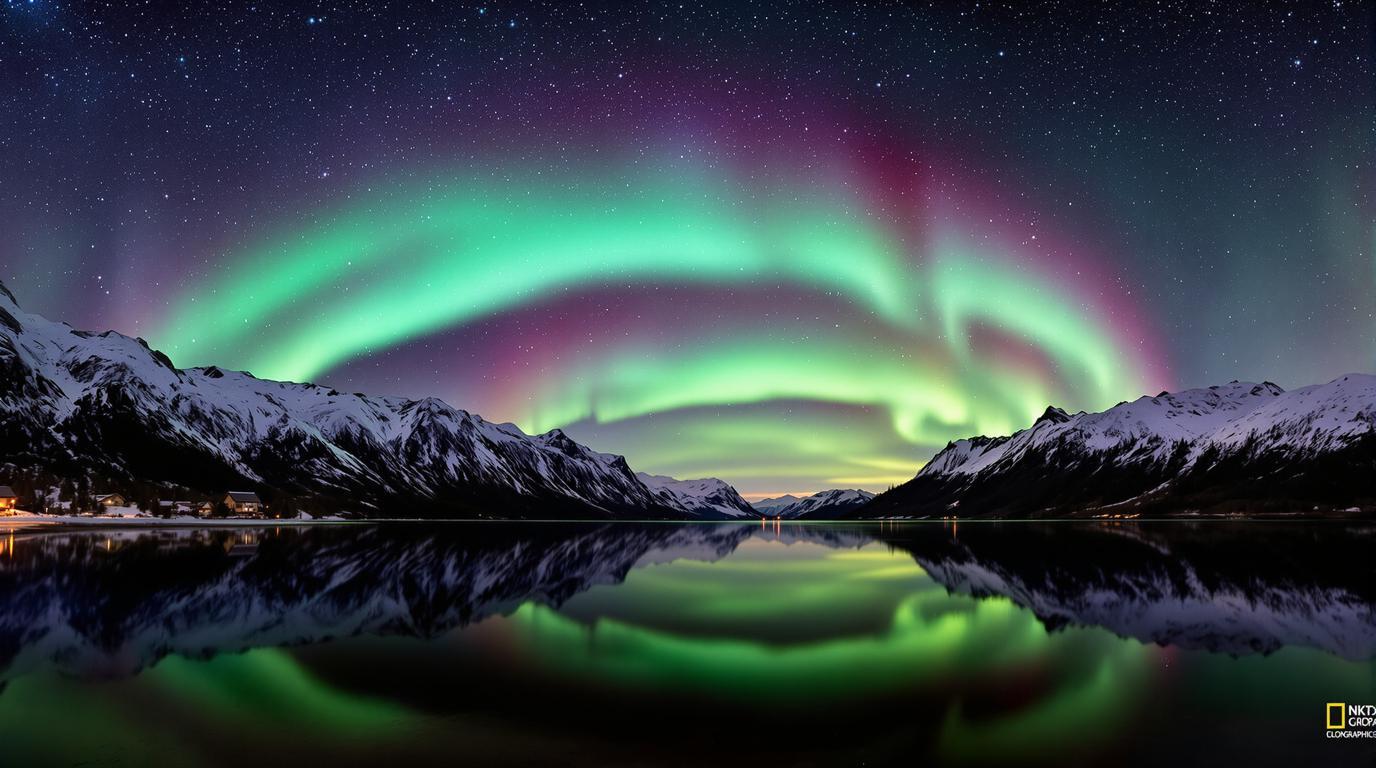The Northern Lights are nature’s most spectacular light show, a celestial ballet that transforms Arctic skies into canvases of green, pink, and purple. With solar activity predicted to peak between 2024-2026, 2025 marks an extraordinary opportunity to witness this phenomenon. But what makes this astronomical wonder truly special, and where should travelers venture for the most breathtaking displays?
Why 2025 is the perfect year for aurora hunting
Aurora activity follows an 11-year solar cycle, with 2025 falling squarely within the predicted peak period. This cosmic timing means more frequent and vibrant displays, with stronger solar storms sending charged particles earthward to create those mesmerizing curtains of light. For travelers planning ahead, this creates a rare window of opportunity.
The science behind the spectacle
The aurora borealis occurs when solar particles collide with gases in Earth’s atmosphere, creating energized photons that manifest as dancing lights. Green displays (the most common) result from oxygen molecules about 60 miles up, while rarer purple and red auroras come from nitrogen or high-altitude oxygen. Understanding this science enhances the viewing experience.
Norway: The crown jewel of aurora destinations
Tromsø, Norway’s self-proclaimed “Capital of the Arctic,” offers the perfect combination of accessibility and prime viewing conditions. This coastal city sits directly under the auroral oval, with tours departing nightly between September and April. For a truly unique experience, consider Norway’s hidden coastal gems where mirror-like fjords double the visual impact by reflecting the lights.
“In Tromsø, we don’t just see the aurora – we experience it through all senses. The absolute silence when the lights appear is magical; you can almost hear the sky breathing,” shares Jostein Hansen, a local aurora guide.
Sweden’s Abisko: The blue hole advantage
Abisko National Park enjoys a microclimate that creates a “blue hole” – a patch of clear sky even when surrounding areas are cloudy. The Aurora Sky Station, perched on Mount Nuolja, provides heated lookouts and expert guides who explain the cultural significance of the lights in Sami traditions.
Finland’s glass igloos: Comfort meets wonder
In Finnish Lapland, particularly around Rovaniemi, glass-roofed accommodations let visitors watch the aurora from bed. The Arctic TreeHouse Hotel and Kakslauttanen Arctic Resort offer modern luxury amid pristine wilderness, similar to the supernatural landscapes that seem otherworldly yet exist right here on Earth.
Iceland: Where fire meets ice (and lights)
Iceland’s Westfjords region combines minimal light pollution with dramatic backdrops of volcanoes and glaciers. The contrast between lunar-like landscapes and the ethereal northern lights creates a photographer’s paradise, especially around Hotel Rangá, where staff will wake you if auroras appear.
Canada’s wild frontier
Churchill, Manitoba offers the unique combination of polar bear viewing and northern lights. Further north, Yellowknife in the Northwest Territories boasts over 200 potential viewing nights annually. The area’s pristine wilderness evokes the mystique of mist-shrouded forests that inspired fantastical film landscapes.
Aurora cruises: Chasing lights at sea
Hurtigruten’s Norwegian coastal voyages offer a unique perspective, viewing auroras reflected on calm fjord waters. Their “Northern Lights Promise” guarantees a free cruise if the lights don’t appear during your journey.
Photographing the unphotographable
Capturing auroras requires preparation and suitable equipment. Pack a tripod, camera with manual settings, and wide-angle lens. The best images emerge from long exposures (10-30 seconds) and high ISO settings (800-3200), revealing colors even more vibrant than what the naked eye perceives.
“I tell photographers to forget the camera for the first few minutes. Experience the wonder first, then document it. The lights are unpredictable – sometimes they’re gentle wisps, other times they’re explosive dancers,” advises Aurora photographer Ole Salomonsen.
Beyond the Northern Lights
Aurora destinations offer enchanting daytime activities too. Dog sledding, snowmobiling, ice fishing, and visiting indigenous communities provide cultural context. Many locations, like the alpine regions where mountains blush rose-gold at sunset, offer their own natural spectacles complementing the nocturnal light show.
The aurora borealis transcends simple sightseeing – it’s a profound connection to cosmic forces that have captivated humanity for millennia. In 2025, when these celestial dancers perform at their peak, witnessing them firsthand offers not just spectacular views, but a humbling reminder of our place in the universe. As the Sami people say, when the lights appear, speak only in whispers – for the aurora is listening.
